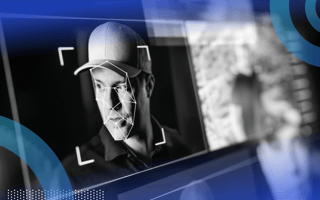The U.S. Senate’s recent decision to remove a proposed ban on AI rules from a big piece of legislation known as the “Trump Megabill” has changed the game for tech companies, especially those that work on deepfake detection. By scrapping the moratorium that would have prevented states from creating their own AI laws, the Senate has unleashed a wave of regulatory uncertainty.
We’re swiftly moving away from a single federal standard and towards a patchwork of state-specific rules, each with its own quirks and demands. This shift should wake up detection vendors: The time of solutions that work for everyone is over. They will need to move to flexible, modular systems that can manage a wide range of compliance needs in order to stay in business.
What the Senate’s AI Decision Means for Deepfake Detection
The U.S. Senate removed a proposed ban on state-level AI laws from the Trump Megabill, clearing the way for states to set their own deepfake regulations. This shift ends the possibility of a single federal standard and creates a patchwork of rules, forcing detection vendors to build flexible, modular systems that can adapt to divergent state requirements.
The State-by-State Free-for-All
This isn’t just a policy wonk’s dream; it’s a big adjustment for an industry that is already having problems keeping up with how quickly AI-generated content is evolving. Deepfakes used to be a relatively niche interest, but now they’re a big concern. There is no doubt that the technology can be hazardous.
For instance, it can construct movies that look like real people lying or audio scams that use AI to clone voices. States are paying attention to these problems and not waiting for Congress to act. California, for instance, has battled for standards that require clearly labeling content created by AI.
Texas, on the other hand, is moving towards stricter criteria, which means that material must undergo rigorous verification to make sure it isn't being manipulated. New York and Florida are also developing their own rules, each with its own goals and ways to enforce them.
This inconsistency in rules is a double-edged sword for companies that sell detection tools. Such a patchwork regulatory framework forces you to think about new things. Companies who can create APIs that can modify to meet California’s disclosure rules or Texas’s verification standards will have an edge over their competitors. But on the other hand, effectively carrying out such a project is incredibly hard.
A single, massive detection algorithm won’t work anymore. Vendors now have to create systems that can work with more than one set of rules. So, they have to make sure that they meet the needs of each state without losing speed or accuracy. Such flexibility and accuracy isn’t an easy thing to achieve in an industry where false positives and missed detections may destroy trust faster than a viral deepfake.
The Senate’s move raises a question at the heart of how the United States handles new technology: Should Washington set the rules, or should states figure it out themselves? Tech giants like OpenAI and Microsoft lobbied hard for the federal ban, essentially asking Congress to hit the pause button so they could work with one unified set of rules instead of navigating what Sam Altman called the nightmare of “50 different sets of regulation.”
But state lawmakers weren’t buying it. They argued that, while Congress talks, real problems keep getting worse: election interference, sophisticated scams targeting vulnerable people, deepfake revenge porn. Senator Marsha Blackburn captured the frustration perfectly when she pointed out that Congress keeps failing to act on emerging tech issues, while “our states” are actually “protecting children in the virtual space.”
This state-first approach may sound empowering, but it creates serious headaches for the companies actually building detection technology.
Why This Spells Trouble for Tech Companies
Leaving regulation to the states comes with some risks. For tech companies developing AI systems, compliance is likely to get very expensive. The EU’s experience offers a warning: even with a coordinated approach and dedicated small business support, AI compliance costs reach €12,000 per high-risk system for small companies.
Making modular systems that can function with different standards takes significant resources. And, unlike Europe’s unified framework, U.S. companies will face 50 different state requirements without any coordinated support infrastructure.
Companies that are already having a hard time keeping up with the arms race against more advanced deepfakes may face even greater struggles. Companies with more money and resources might be able to take the detection space over, but they’ll still have issues. Each state will need distinct data sets to train its detection systems.
Enforcement is also a problem. States will have to invest money into surveillance techniques to ensure that people follow the law. This might put even more strain on already tight budgets, especially in smaller states.
The Silver Lining for Detection Firms
But there is still hope. The Senate’s choice might speed up the development of new approaches to finding deepfakes. As suppliers rethink how they do things, they may create better, more adaptable technology.
But for now, the route forward is not clear. Detection companies need to act fast and invest in systems that can handle a lot of different state requirements. They’ll need to cooperate with lawmakers to make sure that their technology satisfies new standards without losing accuracy.
They’ll also need to explain in simple terms how their systems function to the public because rules aren’t always clear. The other choice is to fall behind and let deepfake manufacturers gain more influence in a society that’s already out of control.
The Senate’s vote has led to a new era in AI law. Competition, complexity and adaptability will all be hallmarks of this time.





